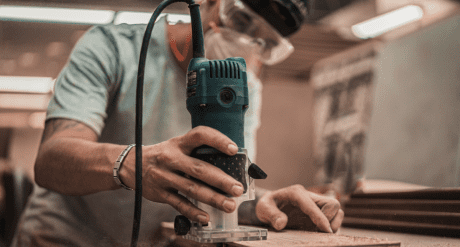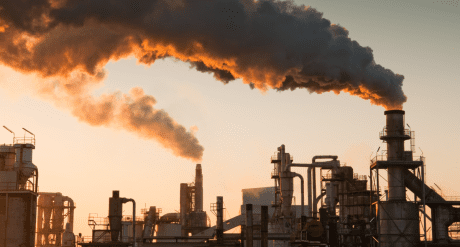
What’s Trending In Compliance? (May 2022)

At Compliance & Risks we help manufacturers, retailers and their supply chain partners to monitor and manage global regulations via C2P, our compliance knowledge management platform.
These are some of the top trending topics that generated the most interest in the last month.
1. EU: Registration, Evaluation, Authorisation and Restriction of Chemicals (REACH), Regulation (EC) 1907/2006 – Amendment – (on addition of 5 new substances to Annex XIV – Authorisation List) Regulation (EU) 2022/586
On 11 April 2022, the EU added 5 new substances to the Authorisation List bringing the total number of substances to 59. All the new EU REACH Annex XIV substances have a Latest Application Date of 1 November 2023, and a Sunset Date of 1 May 2025.
Tetraethyl Lead (TEL) EC 201-075-4:
TEL was used as an anti-knocking additive and octane enhancer in leaded fuels, but this no longer the case. TEL is still used as a fuel additive in aviation fuel for light aircraft with internal combustion engines rather than gas turbines. Alternative fuels are in development for the remaining aircraft reliant on this fuel. TEL was is used in hydraulic liquids in automotive suspension, lubricants in motor oil and brake fluids and there may be a few uses remaining.
4,4′-bis(dimethylamino)-4”-(methylamino)trityl alcohol EC 209-218-2 [with ≥0.1% w/w of Michler’s ketone (MK) EC 202-027-5 or Michler’s base (MB) EC 209-218-2]:
This substance is a dye in printing inks and toners. It is also a reaction by-product of the degradation of methyl green. Methyl green is used in medical DNA related applications.
Reaction products of 1,3,4-thiadiazolidine-2,5-dithione, formaldehyde and 4-heptylphenol, branched and linear (RP-HP) [with ≥ 0,1% w/w 4-heptylphenol, branched and linear (4-HPbl)]:
These reaction products are used as corrosion inhibitors in lubricants and greases including products (gear oils) that are supplied to consumers. The group includes:
- Formaldehyde, reaction products with phenol heptyl derivs. and 1,3,4-thiadiazolidine-2,5-dithione EC No.: 939-460-0
- Formaldehyde, reaction products with branched and linear heptylphenol, carbon disulfide and hydrazine EC No.:300-298-5
2-ethylhexyl 10-ethyl-4,4-dioctyl-7-oxo-8-oxa-3,5-dithia-4-stannatetradecanoate (DOTE) EC 239-622-4, And Reaction mass of 2-ethylhexyl 10-ethyl-4,4-dioctyl-7-oxo-8-oxa-3,5-dithia-4-stannatetradecanoate and 2-ethylhexyl 10-ethyl-4-[[2-[(2-ethylhexyl)oxy]-2-oxoethyl]thio]-4-octyl-7-oxo-8-oxa-3,5-dithia-4-stannatetradecanoate (reaction mass of DOTE and MOTE):
DOTE and the reaction mass of DOTE and MOTE function as heat stabilisers during the manufacture of PVC articles. DOTE is also used as a reactive catalyst.
2. EAEU: Approving Technical Regulations on Energy Efficiency Requirements for Energy-Consuming Devices, Decision No. 114, 2019 – Amendment – (on postponing commencement and compliance deadlines) Decision No. 50, 2022
On 18 April 2022 the Eurasian Economic Commission published Decision No. 50 amending the technical regulations on energy efficiency requirements of energy-consuming devices (TR EAEU 048/2019).
Considering the significant time required to complete the coordination and approval of the requisite documentation for implementation of the technical regulation, and lack of lack of infrastructure base (testing laboratories, reference samples, etc.) to implement the requirements of TR EAEU 048/2019, there is a risk that market participants will only have a short period of time to organize conformity with the new requirements.
As such, the Council of the Eurasian Economic Commission is postponing the following deadlines:
- Entry into force of EAEU TR 048/2019 from 1 September 2022 to 1 September 2025;
- Development of a draft decision of the Council of the Eurasian Economic Commission, establishing the forms of labels for energy-consuming devices of various types and the rules for their execution, to 1 March 2025;
- Entry into force of certain requirements established in Annexes No. 3, 5, 6, 9, 12, 13 and 14 to the EAEU TR 048/2019 for 3 years.
The Decision will enter into force 10 calendar days after its official publication, 28 April 2022.
3. France: Approval of the National Strategy for the Reduction, Reuse and Recycling of Single-use Plastic Packaging, Decree No. 2022-549
On 14 April 2022, the French Ministry of Ecological Transition published Decree No. 2022-549 on the approval of the National Strategy for the Reduction, Reuse and Recycling of Single-use Plastic Packaging.
The strategy establishes that reduction, reuse and recycling targets will be set by decree for the period 2021 – 2025, then for each consecutive period of 5 years. Furthermore, these five-year decrees will be drawn up with relevant stakeholders in order to jointly define realistic requirements.
The Strategy aims to end the marketing of single-use plastic packaging by 2040 and highlights that this ambition requires adaptation by manufacturers. Accordingly, certain single-use plastic products are already prohibited and others will be in the following years, in a progressive manner.
The Decree entered into force on 15 April 2022.
4. Switzerland: Energy Efficiency Requirements for Installations, Vehicles and Equipment, Ordinance, November 2017 – Proposed Amendment – (on stricter minimum energy performance standards (MEPS)), Draft Ordinance, March 2022
The Swiss Federal Council proposes to amend the Ordinance on Energy Efficiency Requirements (OEEE).
The following changes are proposed:
From 1 January 2023, refrigeration appliances may be put into circulation or supplied if their energy efficiency index (EEI) determined according to Annex III of Regulation (EU) 2019/2019 is lower than 80. This does not apply to low-noise appliances, wine storage appliances, and appliances referred to in chapter 1 with only one, two, three, or four-star compartments.
The following appliances put into circulation or supplied from 1 January 2023, must comply with updated energy efficiency requirements laid out in the EU Regulations on Energy Efficiency:
- Refrigeration appliances;
- Tumble dryers;
- Electronic displays;
- Professional refrigeration cabinets (of the vertical freezer type);
- Conventional electric water heaters with a storage volume equal to or greater than 150 liters;
- Hot water tanks with a storage volume less than or equal to 500 liters;
- Electric space heaters with boiler and electric combination heaters with boiler;
- Local heating devices;
- Electric district heaters, with the exception of commercial (if supplied with integrated room temperature control)
If they do not comply with energy efficiency requirements they may not be put into circulation or supplied after 31 December 2022.
The following appliances can be put into circulation or supplied if compliant with extra requirements:
- Mains-powered professional hob – only if they are induction hobs;
- Professional mains-powered dishwashers- only if they have an integrated heat recovery system;
- Open professional gratin or warming ovens, diffusing intense heat and powered by the mains – only if they switch on or off automatically
- Mains-powered professional fryers – only if their tank has thermal insulation of at least 20 mm or a lambda value of 0.035 and if their temperature drops automatically within 30 minutes at the maximum if it’s not being used
Mains-powered professional kitchen appliances need to be assessed within the scope of conformity, based on technical documentation. The tester needs to verify the design and correct operation of the appliance. If they do not meet the requirements, they may not be put into circulation or supplied From 1 January 2023.
Light sources and separate control gear that do not meet the applicable requirements may no longer be put into circulation or supplied.
Extra requirements apply also to mains-powered domestic coffee machines:
- For sales on the Internet, the energy label must be displayed on the display mechanism near the price of the product, must be clear and legible.
- For sale on the Internet, the energy label may be displayed in embedded form, in which case the image used to access the energy label must comply with the specifications set out in chapter 3.5. It must be displayed in full on the first click or when the mouse passes over the image of the product.
- The image used to access the energy label in the case of an embedded display for sale on the Internet must be an arrow of the color corresponding to the energy efficiency class of the product as it appears on the energy label
The last topic mentioned in this proposed amendment are passenger cars, delivery cars and light fifth wheels:
- The energy label must be issued using the type-approval number, the datasheet number, the vehicle identification number (Vehicle Identification number, VIN) or the registration number using the online tool from SFOE at the address www.etiquetteenergie.ch
- If there is no Swiss type-approval or Swiss data sheet and if the energy label cannot be generated using the VIN or registration number, the energy label must be drawn up using the online tool from SFOE using the values of the certificate of conformity referred to in art. 36 or 37 of Regulation (EU) 2018/8589. Access data for this online tool must be requested from SFOE, indicating a responsible person.
- For vehicles running on several types of fuel which can run on different energy sources available throughout Switzerland, the indication of energy consumption and CO2 emissions as well as the calculation of the petrol equivalent and the classification in an energy efficiency category must be made according to the energy agent which has the lowest primary energy gasoline equivalent.
The proposed date of entry into force is 1 January 2023.
5. Vietnam: Approving National Technical Regulation on Electrical Safety for Telecommunications and IT Terminal Equipment, Draft Circular, April 2022
On 13 April 2022, the Vietnamese Ministry of Information and Communications published a Draft Circular that approves the National Technical Regulation on electrical safety requirements applicable to telecommunications and information technology (IT) terminal equipment.
This Regulation does not specify the electrical safety requirements of interfaces for telecommunications network equipment.
This regulation applies to Vietnamese and foreign organizations and individuals that manufacture and trade in equipment covered by this regulation.
This Draft Circular is proposed to enter into force on 1 January 2024.
The deadline for comments on this Draft is 22 June 2022 and the comments can be submitted here.
Stay Updated On Global Regulations
This information is based on the most viewed regulations on C2P this month. If you would like to find out more about how you can stay on top of global regulations, why don’t you Book a Demo with our team today?
Book Time With Our Team
Learn how C2P can help you stay ahead of medical device regulatory changes and achieve uninterrupted market access.









